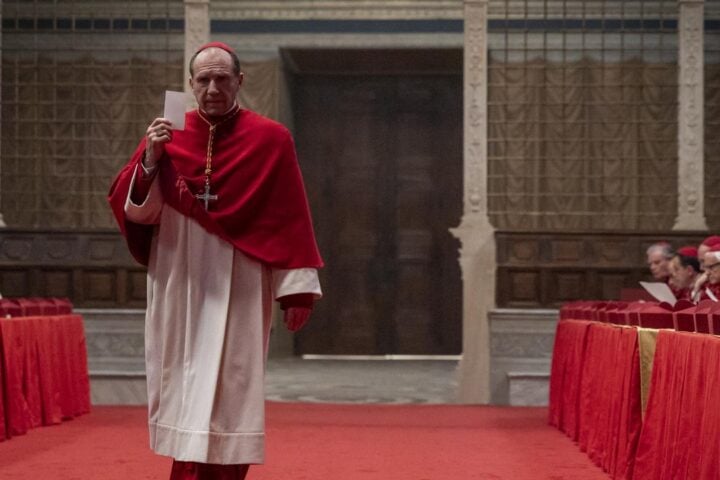There’s no “the” in the title of RaMell Ross’s adaptation of Colson Whitehead’s Pulitzer Prize-winning 2019 novel The Nickel Boys. Though it seems like a minor change, the dropped article turns out to be significant when you see what Ross has brought to the screen. Though Whitehead’s harrowing chronicle of abuses at a reform school in the 1960s was inspired by a real place—the Nickel Academy stands in for the infamous Arthur G. Dozier School for Boys in Florida—Ross sees in Whitehead’s story a more universal tale, one with personal and historical implications beyond the characters and settings of this specific narrative.
The film takes a relatively more abstract approach to telling the story of the friendship that develops between Elwood (Ethan Herisse) and Turner (Brandon Wilson) while they’re students at the Nickel Academy. Ross’s occasional use of archival footage and film clips to both fill in historical context and evoke psychological states will be familiar to those who saw Hale County This Morning, This Evening. A cut from Elwood in the back of the car that brings him to the academy to a clip of Sidney Poitier and Tony Curtis in a similar setting at the beginning of The Defiant Ones, for instance, suggests a bit of psychic recall: a character drawing from his own pop-cultural frame of reference as a way of coping with his own horrific circumstance.
But Ross’s more obvious formal gambit, something that Hale County flirted with, is his decision to tell much of the film through first-person point-of-view shots, a marked difference from the omniscient narration of Whitehead’s novel. Most of the film’s first half is told from Elwood’s perspective: growing up in Tallahassee, excelling in his studies, gaining a greater consciousness of the civil rights struggle, and then finding himself forced to adjust to even more degraded circumstances at the Nickel Academy after he’s wrongfully convicted for being an accomplice to car theft. But when Elwood meets Turner, Ross begins to show us Turner’s perspective, with both vantage points alternating throughout, even in some of their scenes together.
Peppered throughout the film are scenes that take place in Harlem in the 2010s featuring an adult Elwood (Daveed Diggs) as he considers whether or not to come forward and give testimony after numerous unmarked graves are discovered at the former site of the Nickel Academy. Unlike the scenes featuring young Elwood and Turner, though, these scenes are captured with cinematographer Jomo Fray’s camera positioned just behind the character’s head, evoking a sense of displacement, of a man uncomfortable in his own skin.
Ross’s formal devices could be said to reflect the machinations of the novel’s plot, especially in its last third, when, through a bit of narrative hopscotching that the film replicates, we learn—spoilers herein—that the character we initially thought was the adult Elwood is in fact an adult Turner, who adopted Elwood’s identity after he died during their escape attempt from the Nickel Academy. And yet there’s more to Ross’s plays with perspective than gimmickry, just as there was more to Whitehead’s temporal pretzeling than building up to a “gotcha” twist.
Whitehead’s ripped-from-the-headlines novel dramatized an ideological battle of wills between Elwood’s idealism about the possibility of change in an oppressive society and Turner’s weary acceptance of said oppression as the way things have always been and always will be. Thus, it was retroactively moving to discover Turner had adopted Elwood’s identity after his death, in a sense honoring his friend posthumously by trying on the idealism he represented.
The film’s first-person images, lensed in mostly shallow focus by Fray, go even further than Whitehead’s prose in conjuring up a constant sense of discovery: Elwood of the growing awareness of his own Black identity and the limits of his resilience, Turner of an alternative way of navigating a racist society beyond his own previous cynicism. Ross also honors Whitehead’s omniscient narration in his own imaginative ways. Most astonishing in that regard is the head-spinning onrush of archival footage and dramatized bits (edited together by Nicholas Monsour) that pours forth after Elwood is shot and Turner makes his successful escape.
It’s as if the film is viscerally reflecting the experience of Turner adjusting to a life outside of the Nickel Academy, stepping outside his own personal experiences and gaining the kind of awareness of the wider world that Elwood had before he arrived at the school. In that sense, one could call Nickel Boys a coming-of-age tale. But to try to pigeonhole it to a genre would do a disservice to Ross’s remarkable film, which finds an expressive power in formally adventurous technique that fashions mesmerizing, cumulatively affecting poetry out of Whitehead’s prose.
Since 2001, we've brought you uncompromising, candid takes on the world of film, music, television, video games, theater, and more. Independently owned and operated publications like Slant have been hit hard in recent years, but we’re committed to keeping our content free and accessible—meaning no paywalls or fees.
If you like what we do, please consider subscribing to our Patreon or making a donation.





